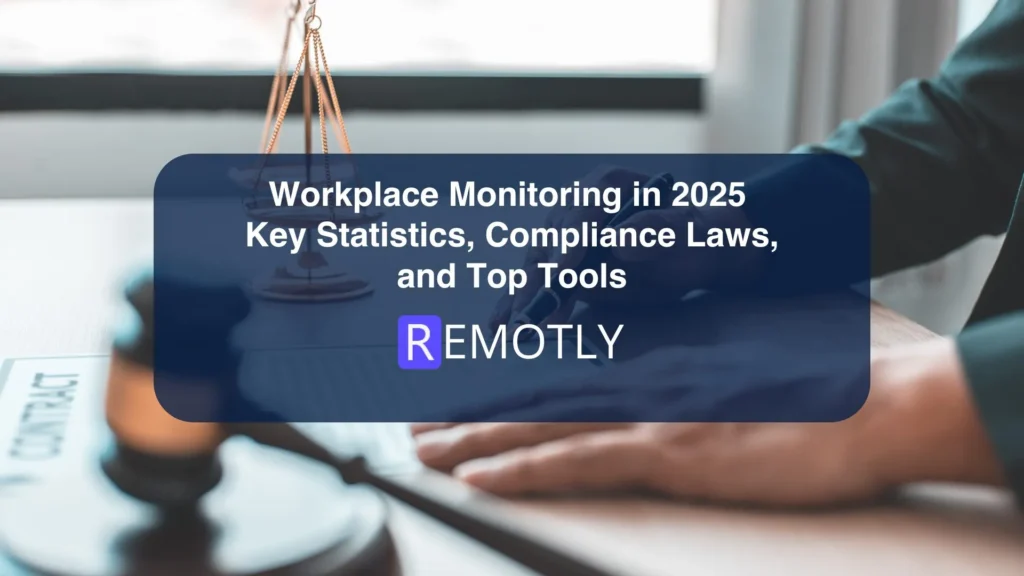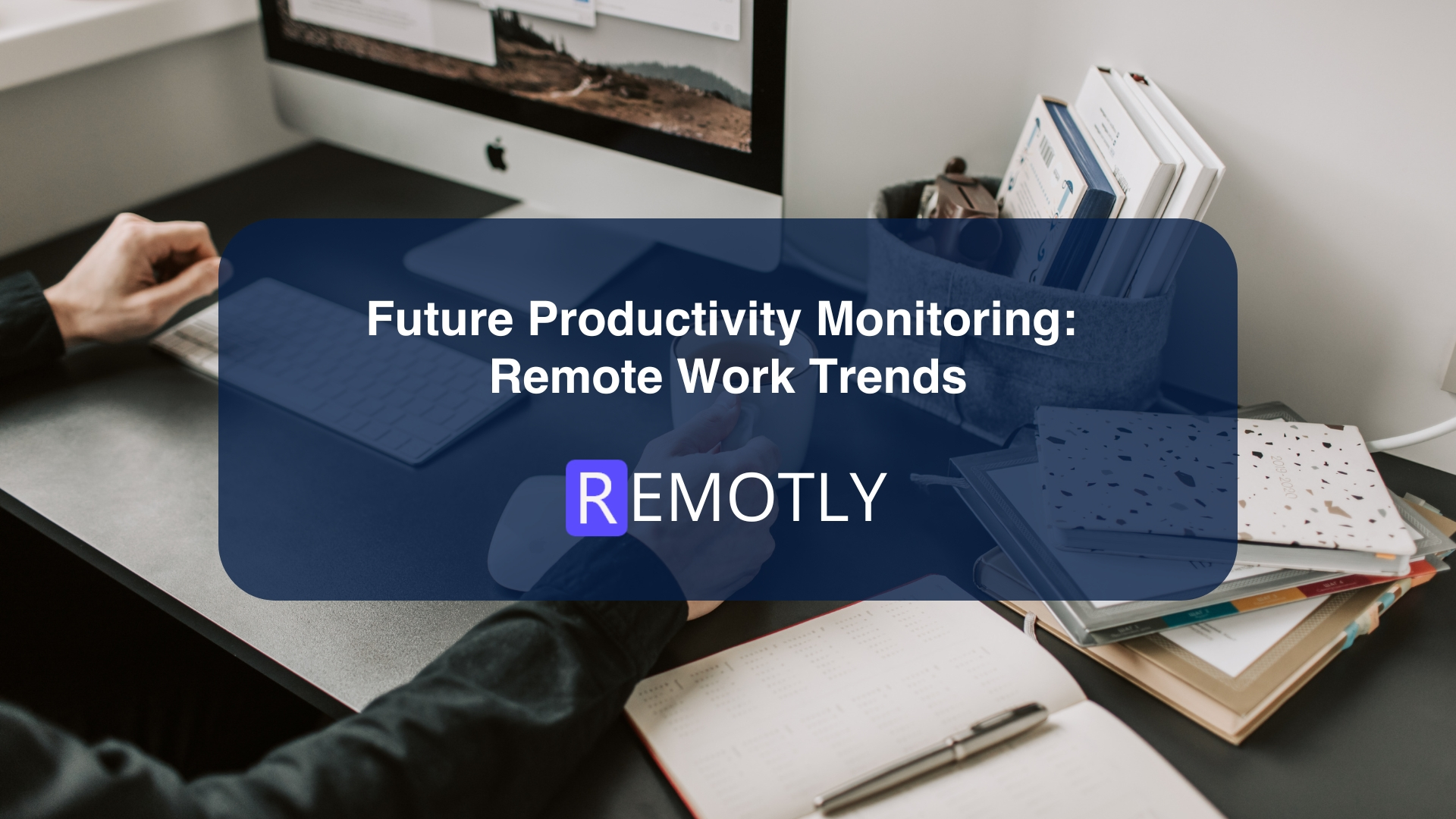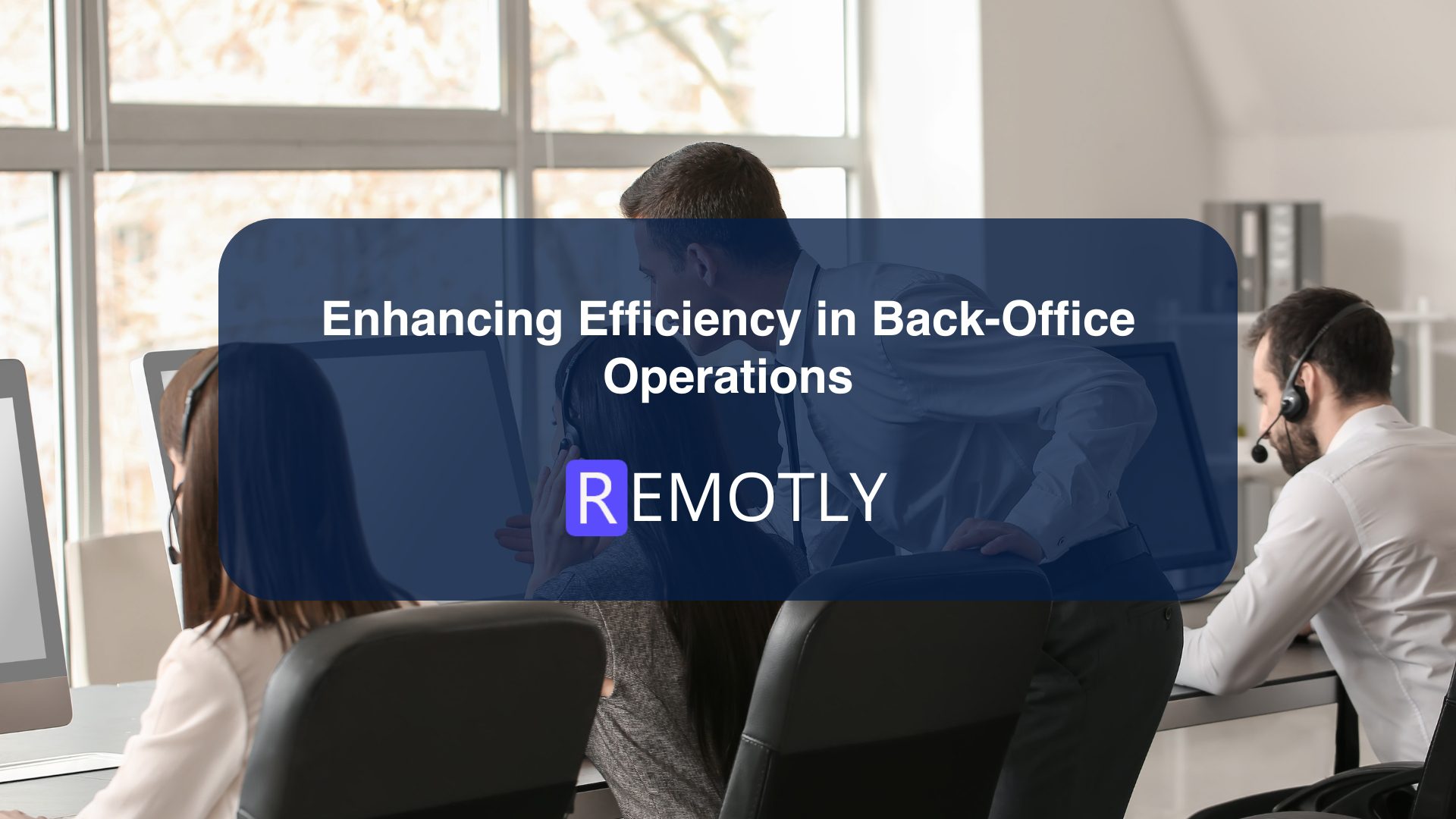Employee monitoring has rapidly evolved in the digital workplace, and in 2025, it stands at the intersection of technology, productivity, and privacy. Businesses are adopting advanced monitoring tools not just to track performance but to understand workforce behavior, maintain compliance, and optimize operations. While these advanced capabilities offer many benefits, they also raise important ethical questions and legal responsibilities.
This blog explores the most up-to-date employee monitoring statistics of 2025, current trends in surveillance technology, the impact of remote work, top tools being used globally, and how businesses can strike a balance between productivity and privacy. Whether you’re an HR leader, startup founder, or compliance officer, understanding these insights can help you make informed decisions.
What is Employee Monitoring and Why is It So Relevant in 2025?
Employee monitoring involves using digital software and surveillance tools to observe and analyze employee behavior, activities, and productivity during working hours. In 2025, it’s no longer limited to tracking emails or internet usage. Organizations now employ AI-driven systems, time tracking, productivity analytics, keystroke logging, webcam snapshots, and real-time location monitoring.
The relevance of monitoring has soared due to the global shift toward remote and hybrid work, which has challenged traditional management methods. Employers are seeking ways to measure performance in distributed environments, reduce time theft, and ensure cybersecurity protocols are followed. On the flip side, employees are demanding more transparency and data protection.
According to a 2025 report by Gartner, over 78% of medium-to-large businesses use some form of digital employee monitoring—an increase of 34% from 2020. As privacy regulations become stricter and employee attitudes evolve, gaining a clear understanding of the current employee monitoring landscape is increasingly essential.
How Common Is Employee Monitoring in 2025? Key Statistics and Usage Trends
One of the most common search queries is: “How many companies use employee monitoring in 2025?”
The answer is revealing. As of early 2025, more than 3 in 4 companies (76%) in North America report using at least one form of employee monitoring. Globally, the number stands at around 64%, with the highest adoption rates in tech, finance, and healthcare industries.
Growth Trends:
- 2020: 42% of companies used employee monitoring.
- 2022: 61% adoption.
- 2025: 76% adoption (projected to reach 82% by 2026).
This acceleration is driven by several factors:
- The rise of remote work, with over 58% of the workforce working remotly at least part-time.
- The adoption of AI and behavior analytics, which offer granular insights into workflows.
- Increasing concern over data security and insider threats.
Notably, SMBs (small and medium-sized businesses) have become major adopters, using lightweight tools like Remotly, Time Doctor, and Hubstaff for cost-effective tracking.
What Are the Most Monitored Employee Activities?
In 2025, monitoring goes beyond tracking time and attendance. Here’s what most companies are observing:
- Application usage: Tracking involves monitoring the specific software programs employees use and measuring the amount of time spent on each application.
- Keystrokes and Mouse Movements: Common in regulated industries like banking and insurance, these indicators flag inactivity or potential misuse.
- Web and URL Tracking: Employers can analyze which websites are being visited during work hours.
- Email and Message Scanning: Some tools include AI that flags risky or inappropriate communication.
- Location Tracking: Especially common in field service industries using GPS-enabled tools.
- Screen Recording and Snapshots: Employers can record activity in intervals or during specific tasks.
While 89% of employers say these tools improve productivity, about 63% of employees express concern about surveillance overreach, according to a 2025 Remote Work Security Index.
How Do Employee Monitoring Tools Impact Productivity and Performance?
One of the most searched user-intent questions is: “Does employee monitoring increase productivity?”
Yes—but the results depend on implementation.
A Harvard Business Review study in 2024 showed that companies using monitoring software reported a 15-20% increase in productivity when tools were used transparently and focused on feedback rather than punishment.
However, if used intrusively or without communication, it led to:
- Increased stress levels (up 25% among monitored employees)
- Employees subject to monitoring showed a 2.3 times higher likelihood of intending to quit their jobs, indicating a significant increase in turnover risk.
- Lower job satisfaction
The key insight: Employee monitoring improves performance only when it’s used to support, not punish. This means using data to identify coaching opportunities, improve workflows, and reward efficiency.
The following are some of the most commonly used employee monitoring platforms in today’s workplace:
In 2025, the employee monitoring software market is worth over $2.3 billion, with hundreds of tools offering varying degrees of surveillance. Here are some of the most widely used platforms:
1. Remotly.tech
Remotly is one of the fastest-growing platforms for ethical employee monitoring. It focuses on time tracking, project analysis, and screenshot capturing—while allowing employees to control what gets shared.
2. Hubstaff
Ideal for SMBs and freelancers, Hubstaff offers productivity analytics, GPS tracking, and invoice generation. It’s praised for its clean interface and privacy controls.
3. Time Doctor
Used in over 80 countries, Time Doctor provides distraction alerts, performance reports, and integrations with tools like Trello and Asana.
4. Teramind
Focused on compliance-heavy industries, Teramind offers live monitoring, behavior analytics, and insider threat detection.
5. ActivTrak
This tool uses AI to segment productive vs. unproductive behaviors, visualize workflows, and analyze team habits.
When choosing a tool, companies must weigh their compliance needs, data storage laws, and employee experience. Opting for customizable, GDPR-compliant solutions is critical to long-term success.
What Are the Legal and Privacy Considerations of Employee Monitoring in 2025?
Search queries like “Is employee monitoring legal in 2025?” or “Can employers spy on employees remotely?” remain hot in SERPs.
The short answer: Yes, it’s legal in many jurisdictions—but with limitations.
Here’s what’s happening in 2025:
- United States: Federal law still permits monitoring, but many states now require explicit consent and written policies. California’s Digital Privacy for Workers Act, passed in late 2024, limits camera and microphone usage during personal hours.
- Europe (GDPR): Under GDPR, employers must prove legitimate interest, minimize data collection, and inform employees beforehand.
- India and APAC: There’s growing pressure to enforce ethical surveillance. The India Privacy Bill 2024 limits passive tracking without notice.
- Canada: Federally regulated businesses require disclosure and consent.
Failing to comply can lead to:
- Legal action
- Employee backlash
- Fines ranging from $10,000 to $250,000+
To stay compliant:
- Draft clear employee monitoring policies.
- Obtain consent through onboarding or contract updates.
- Allow opt-outs where applicable.
- Use anonymized or aggregated data when possible.
What Do Employees Think About Monitoring in the Workplace?
A 2025 Gallup poll revealed that 54% of employees are okay with being monitored— if it improves productivity and safety.
However, concerns remain. The same survey showed:
- 31% worry about micromanagement
- 28% fear invasion of privacy
- 19% dislike the idea of being watched at all
Interestingly, remote workers were more open to monitoring than in-office employees, likely because they associate it with flexibility and trust-building rather than surveillance.
Companies that succeeded in gaining employee buy-in shared a few traits:
- They explained what data was being collected and why.
- They allowed employees access to their own data.
- They provided value—like personalized productivity reports.
This “employee-as-user” approach treats monitoring software like a coaching platform instead of a watchdog, which can make all the difference.
How Can Companies Balance Monitoring With Respect for Privacy?
To answer another common query—“How can employers monitor without invading privacy?”—it comes down to design and intent.
Best Practices:
- Use activity-based monitoring, not invasive tools like webcam streaming or keylogging unless absolutely necessary.
- Ensure employee involvement in shaping monitoring policy.
- Offer transparency dashboards where employees can see what data is collected.
- Respect off-hours and break times—disable tracking outside work schedules.
- Only monitor work devices and avoid mixing personal communication channels like WhatsApp unless previously agreed upon.
Ultimately, the goal is to create a data-driven, trust-based work culture where transparency is the standard, not surveillance.
Future Outlook: What’s Next for Employee Monitoring After 2025?
The future of employee monitoring lies in AI ethics, context-aware monitoring, and self-managed work analytics. In the next 2–3 years, we can expect:
- AI to personalize productivity plans based on behavioral patterns.
- Wearable tech integrations to monitor wellness in high-stress industries.
- Biometric verification for secure logins in remote environments.
- Employee-first analytics platforms where the data collected is first and foremost meant to help the employee improve.
Monitoring will continue to be refined not just by laws—but by user demand. People are becoming more privacy-aware, and companies that respond ethically will retain top talent and build stronger workplaces.
FAQs
Is employee monitoring software legal in every country?
No, legality varies. While it’s legal in the US and many parts of Asia, GDPR in Europe requires employers to justify its necessity and notify employees in advance.
What’s the best employee monitoring software in 2025?
Top-rated tools include Remotly, Time Doctor, and Hubstaff for their balance of functionality, usability, and privacy features.
Can monitoring reduce productivity if employees feel watched?
Yes. Studies show productivity increases only when monitoring is transparent and non-invasive. Poorly implemented surveillance can cause stress and disengagement.
Is it ethical to use webcam surveillance during remote work?
It depends. Continuous webcam use is generally considered invasive. Snapshots or video only during specific meetings or tasks, with consent, is more acceptable.




